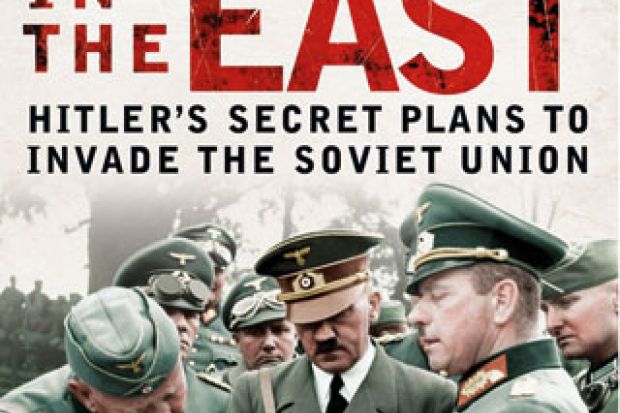This is the work of one of Germany’s leading military historians and the book’s subtitle promises something like an exposé of a secret Nazi strategy to invade the Soviet Union even in 1939. Rolf-Dieter Müller begins by singling out the early post-war generation of military and diplomatic historians in his own country, particularly Klaus Hildebrand, well known for his depiction of Hitler’s “step-by-step plan” that visualised the conquest of the world in stages. Of the view that this older school wrongly emphasised Hitler and his ideas and all but excluded the Wehrmacht leadership, Müller turns his focus directly on these figures, especially Franz Halder, chief of the army general staff, whose post-war testimony helped to establish a narrative that shifted all responsibility for key military decisions on to Hitler’s shoulders.
Yet even if the author’s aim is to show the military’s complicity in Germany’s war of aggression, he could have said much more than he does about the positive appeal National Socialist ideology exercised inside the Wehrmacht. Instead, we get a lengthy review of German-Polish relations in the 1930s. Apparently, so Müller believes, there was a good chance that Poland would join in an anti-Soviet crusade. He usefully reminds us that Poland and Germany signed a non-aggression treaty in 1934, and more shockingly that the leaders of both countries shared anti-Bolshevik and anti-Semitic sentiments. Even so, surely the Poles must have recognised that a crusading Wehrmacht heading for Moscow would inevitably turn on Poland. That might have been why Warsaw refused to sign on to a German-led invasion of the Soviet Union at the end of the 1930s.
Given Hitler’s determination for a clash of arms, he soon opted for war against Poland, a decision that forced the Wehrmacht to switch strategies. After the swift victory that followed in September 1939, Hitler again surprised the military with instructions to design the invasion of France for the next spring. Therefore, on the heels of triumph in Paris in June 1940, General Halder was already working out a military strategy on 3 July, in advance of any instructions from Hitler, to avoid again being left “standing there empty-handed when the Führer gave the order” to attack, this time the Soviet Union. Halder approved the strategy for the invasion before Hitler’s address to the military at the end of July. Although Müller tells us that this new plan “cannot be attributed to Hitler”, such a claim ignores the broader context and numerous subsequent adjustments.
If Halder’s diary contains “no talk of the racially ideological war of annihilation” when he got around to discussing strategy in the East with Hitler, what does that prove? Perhaps the general saw no need to note the unspoken assumptions or the barbarity they all presumed was ahead. The German leaders agreed that the attack would ignore all the conventions of war, and in a vicious but limited strike against the USSR that would begin on 22 June 1941, they would obliterate the country’s very existence.
The supreme folly of their calculations, laced with prejudice and hate, is striking not just because of their obvious failure by the year’s end. The flaws in the designs for war appear downright foolhardy if we take into account Germany’s thin intelligence on the Soviets and the warnings its leaders were given, admittedly only from a few high-level experts at the German embassy in Moscow. They reported that in the event of a defensive war, Stalin could count on the support of the entire population, so that even if there were setbacks, the vast country could not be expected to fall apart or collapse like a colossus with feet of clay.
Enemy in the East: Hitler’s Secret Plans to Invade the Soviet Union
By Rolf-Dieter Müller
I. B. Tauris, 320pp, £25.00
ISBN 9781780768298
Published 12 January 2015
Register to continue
Why register?
- Registration is free and only takes a moment
- Once registered, you can read 3 articles a month
- Sign up for our newsletter
Subscribe
Or subscribe for unlimited access to:
- Unlimited access to news, views, insights & reviews
- Digital editions
- Digital access to THE’s university and college rankings analysis
Already registered or a current subscriber? Login





